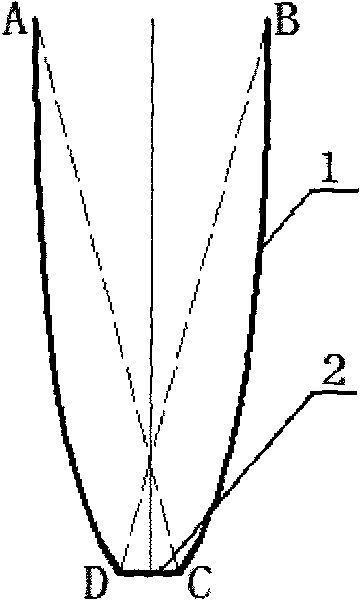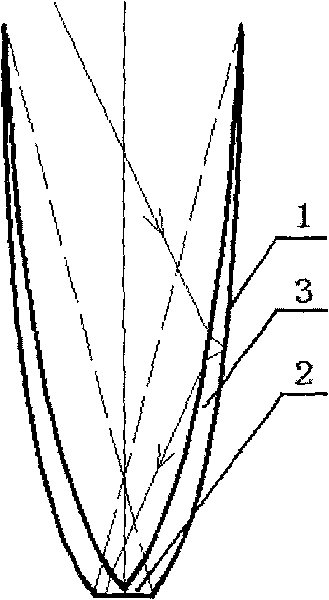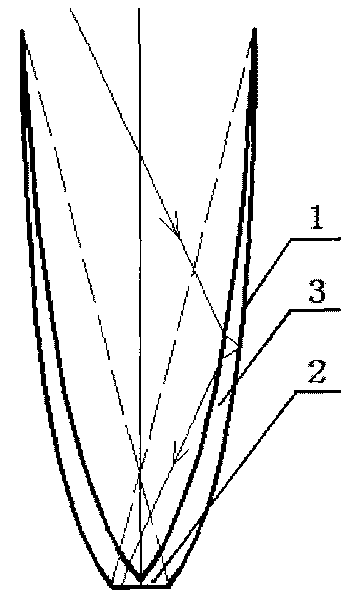Compound paraboloid condenser
A compound paraboloid and concentrator technology, which is applied in the field of solar energy utilization, can solve the problems of reducing the receiving half-angle, reducing sunlight, reducing optical efficiency, etc., and achieving the effect of expanding the receiving half-angle
- Summary
- Abstract
- Description
- Claims
- Application Information
AI Technical Summary
Problems solved by technology
Method used
Image
Examples
Embodiment Construction
[0019] The technical scheme adopted by the present invention to solve the technical problem is: the two curves of ordinary CPC are rotated 2-5 degrees to the direction of the CPC center line around the upper edge points of the ordinary CPC respectively to form a new CPC curve. Fill the dielectric material between the old and new CPC curves, and cover the outer surface of the dielectric with a reflective coating (the coating should be a material with a high reflectance such as space insulation ceramic layer, AP-35, etc.), or add an additional coating to the outer surface of the dielectric A high-quality metal (such as aluminum, iron, etc.) reflective surface, thus forming a new type of CPC concentrator. When the sunlight (within the receiving range) enters the concentrator, it will enter the receiving surface at the bottom of the concentrator after a series of refraction and reflection.
[0020] The above-mentioned dielectric materials should be selected with high transmittance...
PUM
 Login to View More
Login to View More Abstract
Description
Claims
Application Information
 Login to View More
Login to View More - R&D
- Intellectual Property
- Life Sciences
- Materials
- Tech Scout
- Unparalleled Data Quality
- Higher Quality Content
- 60% Fewer Hallucinations
Browse by: Latest US Patents, China's latest patents, Technical Efficacy Thesaurus, Application Domain, Technology Topic, Popular Technical Reports.
© 2025 PatSnap. All rights reserved.Legal|Privacy policy|Modern Slavery Act Transparency Statement|Sitemap|About US| Contact US: help@patsnap.com



